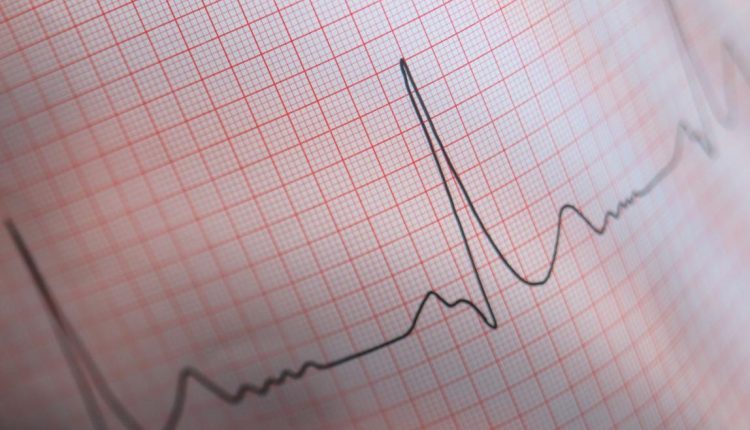
Abnormal electrical activity of the heart: ventricular fibrillation
Ventricular fibrillation is characterised by disorganised and chaotic electrical activity of the heart starting in the ventricle
It is a severe form of cardiac arrest that must be treated in time because it could lead to death in a short time.
The ventricles are traversed by uncoordinated electrical impulses that constantly change.
Mechanically, the heart in ventricular fibrillation is stationary and only a small amount of blood is sent to the rest of the body.
THE WORLD’S RESCUE RADIO? IT’S RADIOEMS: VISIT ITS BOOTH AT EMERGENCY EXPO
The main causes of ventricular fibrillation include:
Myocardial infarction, structural heart disease, congenital heart rhythm disorders, and drug treatments in addition to substance abuse.
Symptoms of ventricular fibrillation, which occur rapidly, include:
Difficulty breathing, loss of consciousness, chest pain, palpitations and heart palpitation, fatigue, cyanosis and cardiac arrest.
This is a very serious condition that it is important to recognise and treat as quickly as possible.
If left untreated, it leads to death.
Diagnosis
The rapidity with which the arrhythmic disorder evolves makes it difficult to make a complete diagnosis.
It will only be possible in patients who present the arrhythmia in hospital and are monitored; when the patient loses consciousness, it will be possible to diagnose cardiac arrest but not ventricular fibrillation.
The diagnosis of the latter will be made by placing a defibrillator on the patient’s chest.
The treatment for ventricular fibrillation
Ventricular fibrillation will not stop after it has occurred, so it is necessary to act quickly to prevent death.
The only possible treatment is to perform first aid manoeuvres and defibrillation; if the latter is not possible, external cardiac massage and assisted ventilation should be performed to ensure oxygenation and blood supply to the organs.
Once the patient has regained consciousness, the cause of the ventricular fibrillation will be investigated.
If the cause of ventricular fibrillation is known, patients who have survived ventricular fibrillation will undergo cardiac defibrillator implantation as a preventive measure.
Ventricular fibrillation may also occur in individuals with no known heart disease
Patients at high risk of ventricular fibrillation and sudden cardiac death will also undergo cardiac defibrillator implantation before the life-threatening ventricular arrhythmia episode occurs.
Read Also
Emergency Live Even More…Live: Download The New Free App Of Your Newspaper For IOS And Android
Supraventricular Tachycardia: Definition, Diagnosis, Treatment, And Prognosis
Ventricular Aneurysm: How To Recognise It?
Atrial Fibrillation: Classification, Symptoms, Causes And Treatment
EMS: Pediatric SVT (Supraventricular Tachycardia) Vs Sinus Tachycardia
Atrioventricular (AV) Block: The Different Types And Patient Management
Pathologies Of The Left Ventricle: Dilated Cardiomyopathy
A Successful CPR Saves On A Patient With Refractory Ventricular Fibrillation
Atrial Fibrillation: Symptoms To Watch Out For
Atrial Fibrillation: Causes, Symptoms And Treatment
Difference Between Spontaneous, Electrical And Pharmacological Cardioversion
‘D’ For Deads, ‘C’ For Cardioversion! – Defibrillation And Fibrillation In Paediatric Patients
Inflammations Of The Heart: What Are The Causes Of Pericarditis?
Do You Have Episodes Of Sudden Tachycardia? You May Suffer From Wolff-Parkinson-White Syndrome (WPW)
Knowing Thrombosis To Intervene On The Blood Clot
Patient Procedures: What Is External Electrical Cardioversion?
Increasing The Workforce Of EMS, Training Laypeople In Using AED
Heart Attack: Characteristics, Causes And Treatment Of Myocardial Infarction
Altered Heart Rate: Palpitations
Heart: What Is A Heart Attack And How Do We Intervene?
Do You Have Heart Palpitations? Here Is What They Are And What They Indicate
Palpitations: What Causes Them And What To Do
Cardiac Arrest: What It Is, What The Symptoms Are And How To Intervene
Electrocardiogram (ECG): What It Is For, When It Is Needed
What Are The Risks Of WPW (Wolff-Parkinson-White) Syndrome
Heart Failure: Symptoms And Possible Treatments
What Is Heart Failure And How Can It Be Recognised?
Inflammations Of The Heart: Myocarditis, Infective Endocarditis And Pericarditis
Quickly Finding – And Treating – The Cause Of A Stroke May Prevent More: New Guidelines
Atrial Fibrillation: Symptoms To Watch Out For
Wolff-Parkinson-White Syndrome: What It Is And How To Treat It
Do You Have Episodes Of Sudden Tachycardia? You May Suffer From Wolff-Parkinson-White Syndrome (WPW)
What Is Takotsubo Cardiomyopathy (Broken Heart Syndrome)?
Heart Disease: What Is Cardiomyopathy?
Inflammations Of The Heart: Myocarditis, Infective Endocarditis And Pericarditis
Heart Murmurs: What It Is And When To Be Concerned
Broken Heart Syndrome Is On The Rise: We Know Takotsubo Cardiomyopathy
Heart Attack, Some Information For Citizens: What Is The Difference With Cardiac Arrest?
Heart Attack, Prediction And Prevention Thanks To Retinal Vessels And Artificial Intelligence
Full Dynamic Electrocardiogram According To Holter: What Is It?
In-Depth Analysis Of The Heart: Cardiac Magnetic Resonance Imaging (CARDIO – MRI)
Palpitations: What They Are, What Are The Symptoms And What Pathologies They Can Indicate
Cardiac Asthma: What It Is And What It Is A Symptom Of
Cardiac Rhythm Restoration Procedures: Electrical Cardioversion



